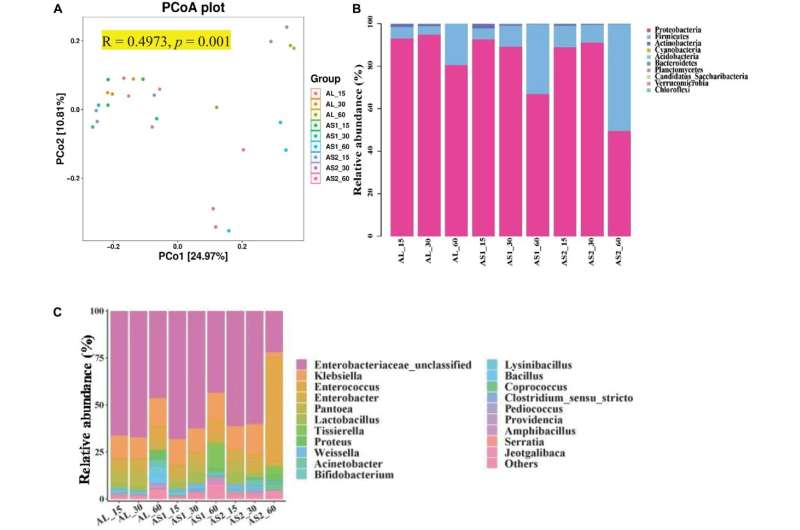Figure 1. (A) Principal coordinate analysis (PCoA). (B) Relative abundance of microbiota at the level of phylum in the alfalfa silage samples. (C) Relative abundance of microbiota at the level of genus. Credit: DOI: 10.3389/fmicb.2021.670165
Alfalfa silage is one of the main roughages in the production of dairy cow. It can provide nutrition with high-quality to improve milk quality and production. Sucrose additions have been widely used to improve the silage quality.
When ensiling forage, the types of microorganism that are present during fermentation also play a critical role.
Researchers from the Institute of Subtropical Agriculture (ISA) of the Chinese Academy of Sciences investigated the effects of sucrose supplementation alone on ensiling characteristics and bacterial community compositions of alfalfa silage.
The study was published in Frontiers in Microbiology on Oct. 13.
They found that the ensiling time decreased the crude fiber content, and increased the ammonia nitrogen, acetic acid content, and the relative abundance of Enterococcus in the silages.
Sucrose supplementation decreased the pH levels and the neutral detergent fiber, propionic acid, and butyric acid contents of alfalfa silages, thus improving the quality of alfalfa silages. The reduced level of butyric acid suppressed harmful bacteria and increased the relative abundance of Lactobacillus and Enterococcus in the silage.
Furthermore, there was an increment in the relative feed value (RFV) levels with the increments of the sucrose supplementation.
The results suggest that sucrose supplementation could improve the feeding quality of alfalfa silage and increasing its beneficial bacterial content.
More information: Jinhe Kang et al, Alfalfa Silage Treated With Sucrose Has an Improved Feed Quality and More Beneficial Bacterial Communities, Frontiers in Microbiology (2021). DOI: 10.3389/fmicb.2021.670165
Journal information: Frontiers in Microbiology
Provided by Chinese Academy of Sciences
























